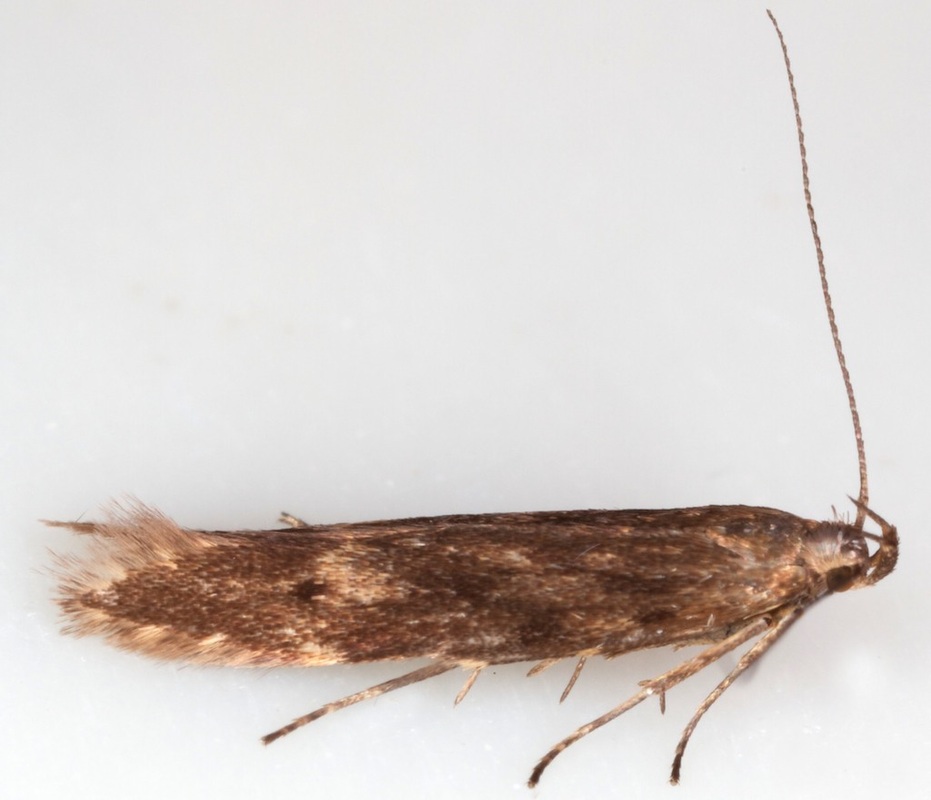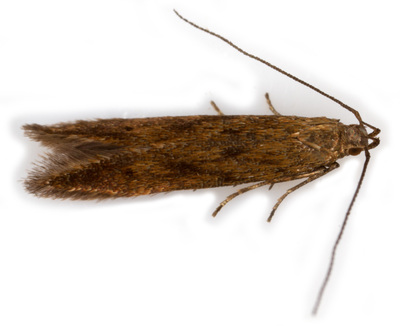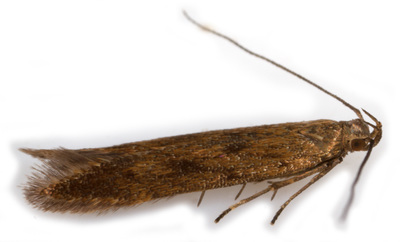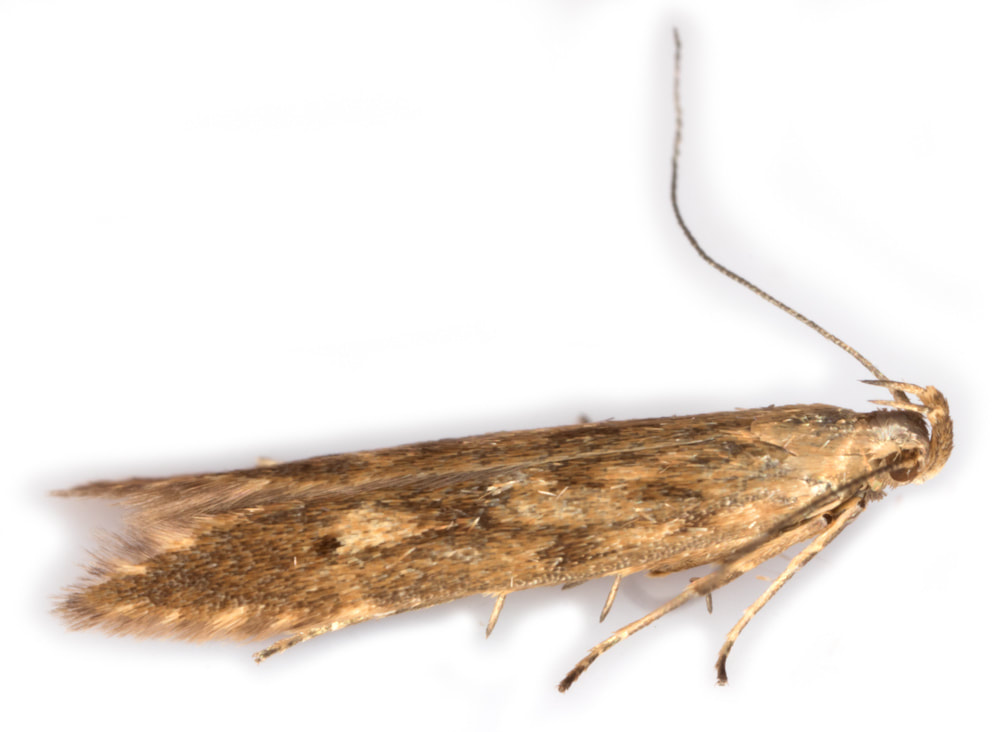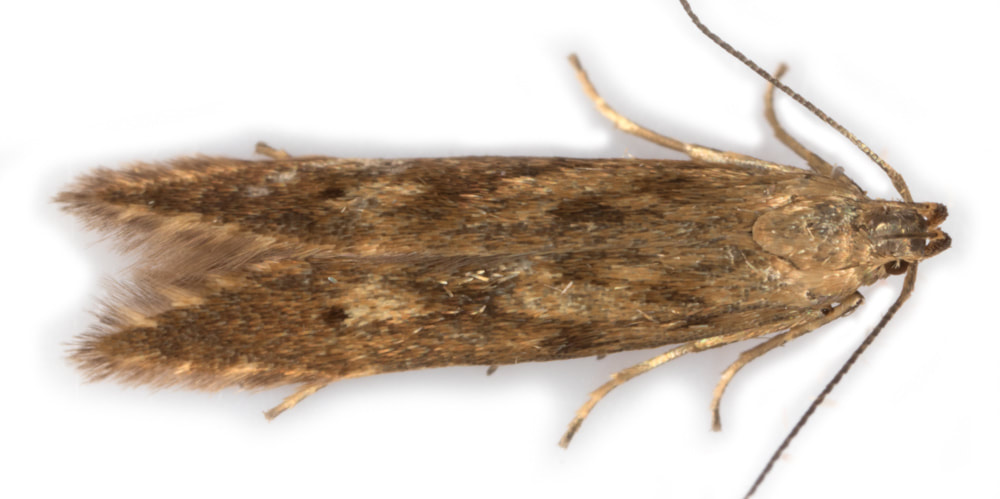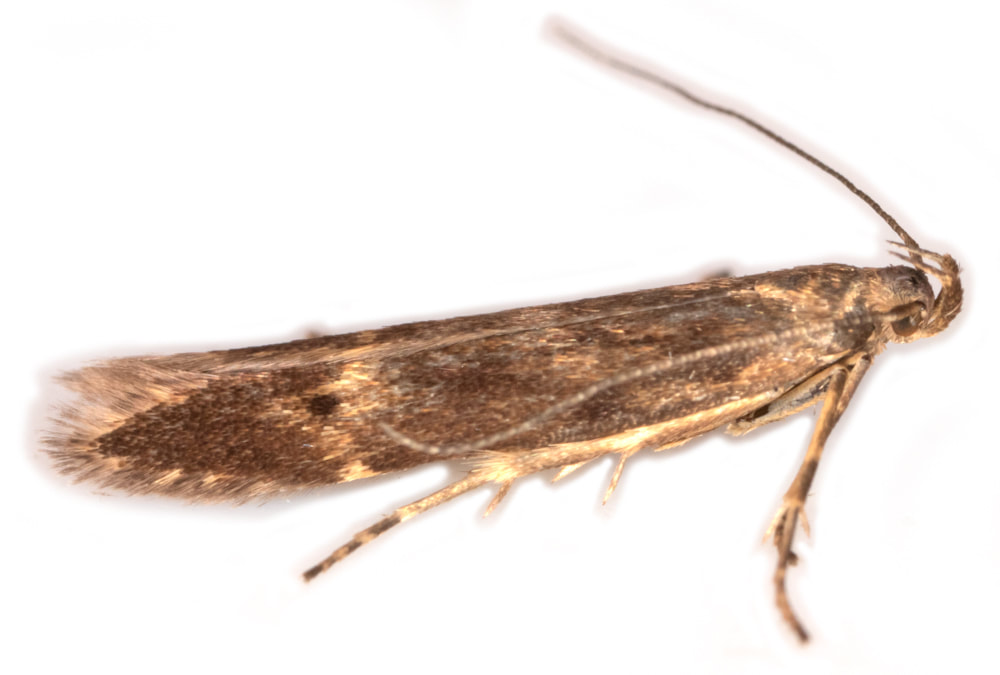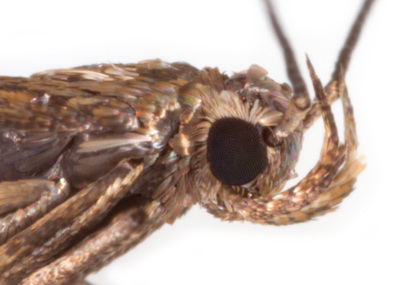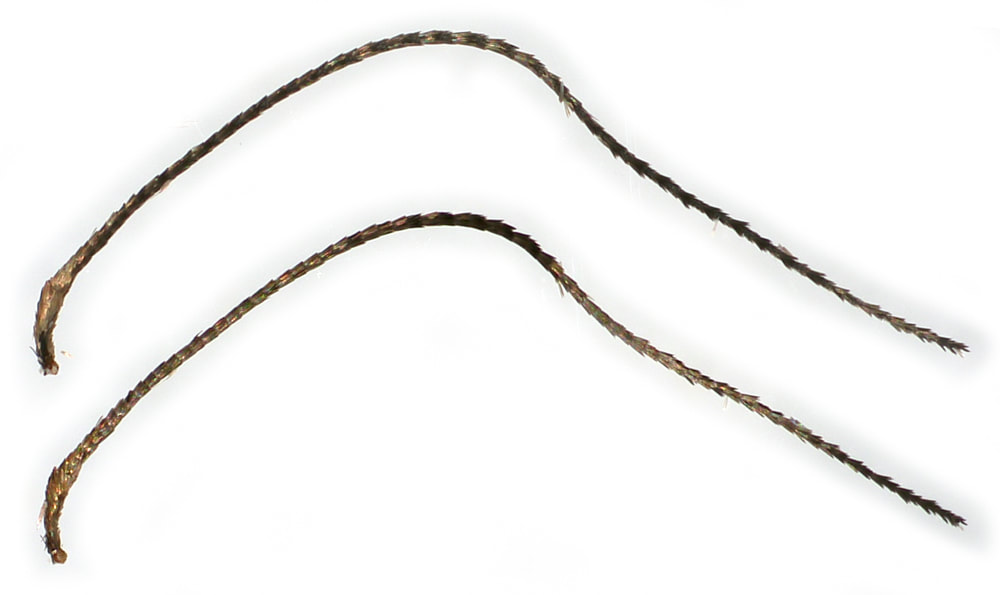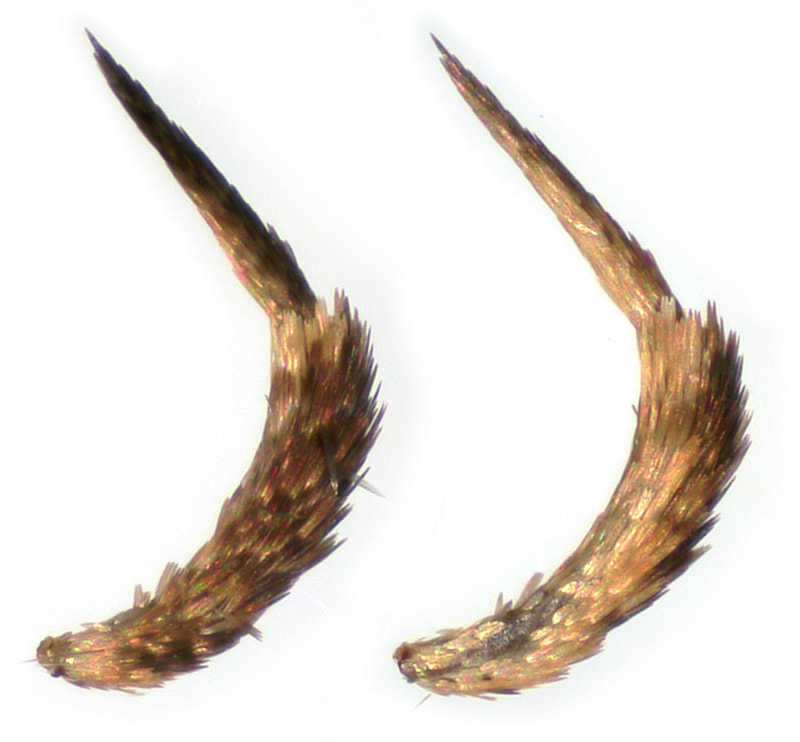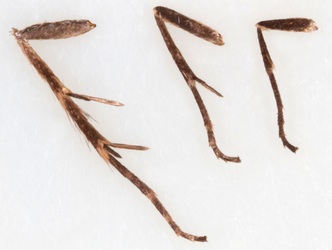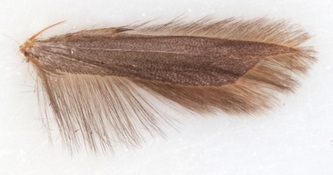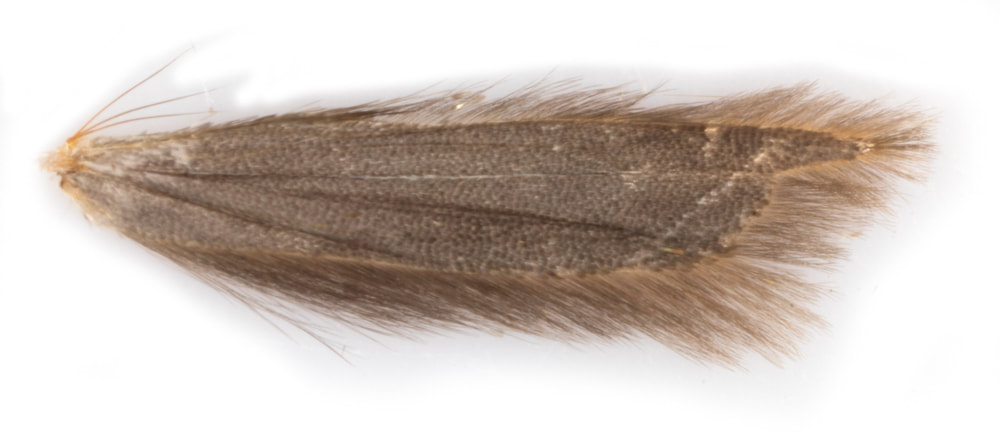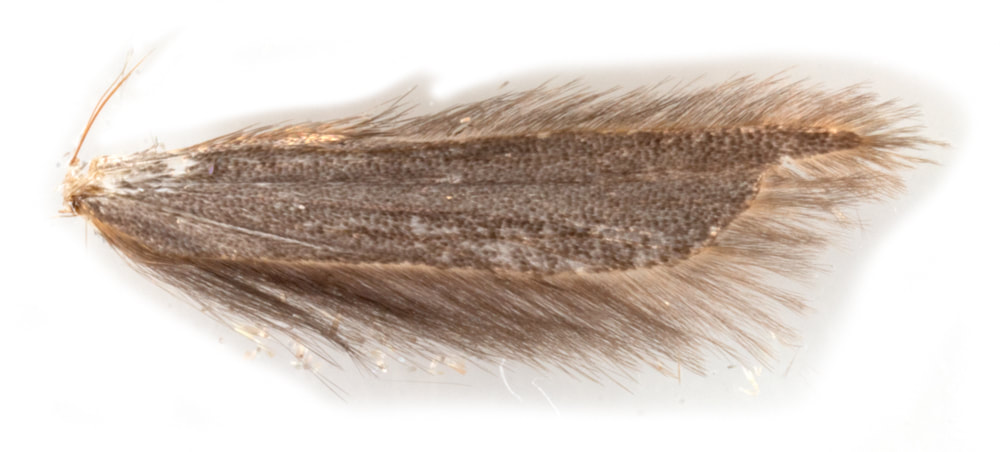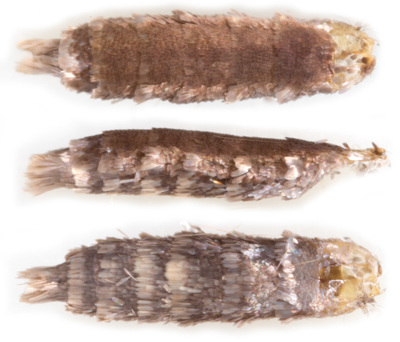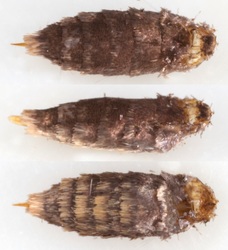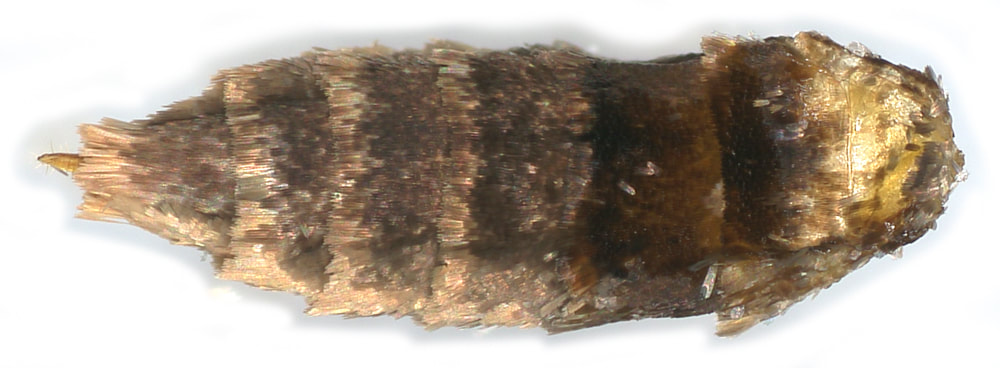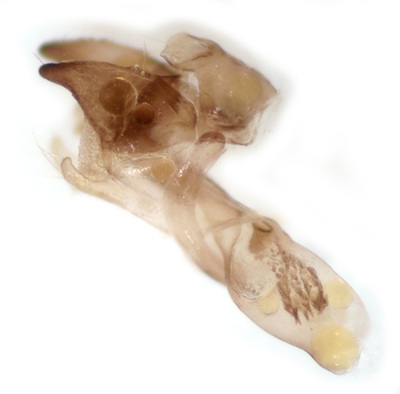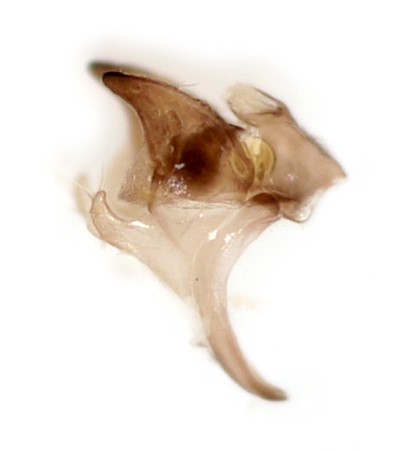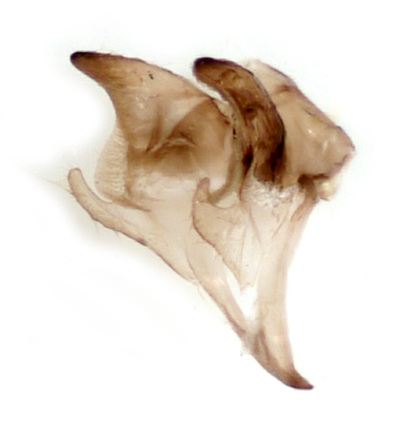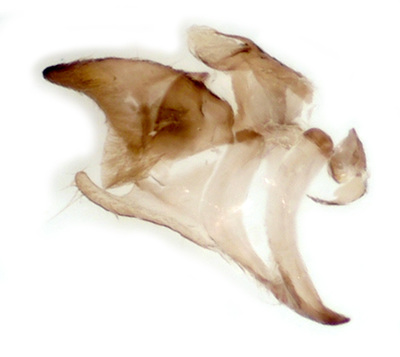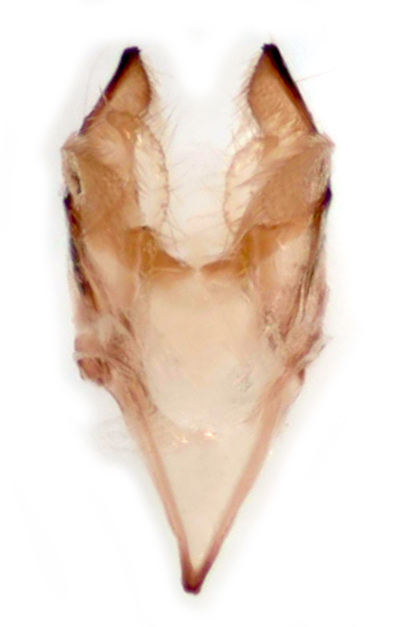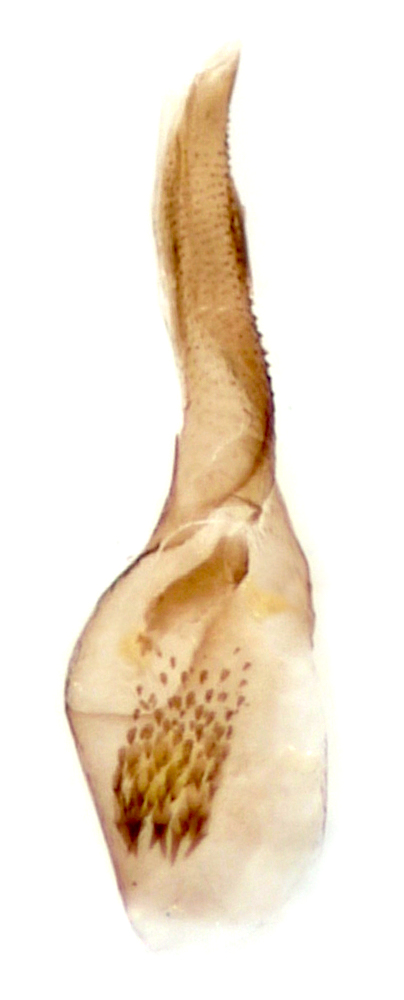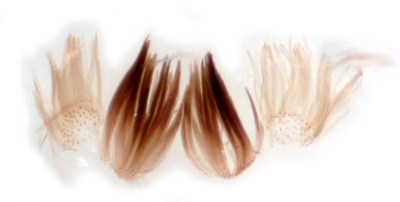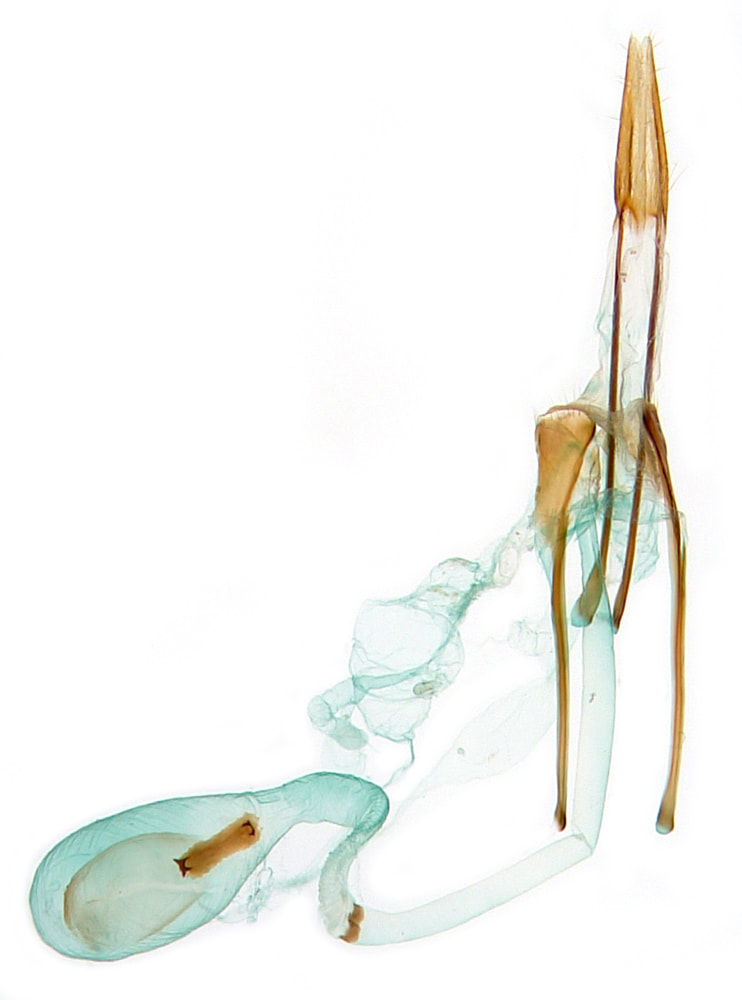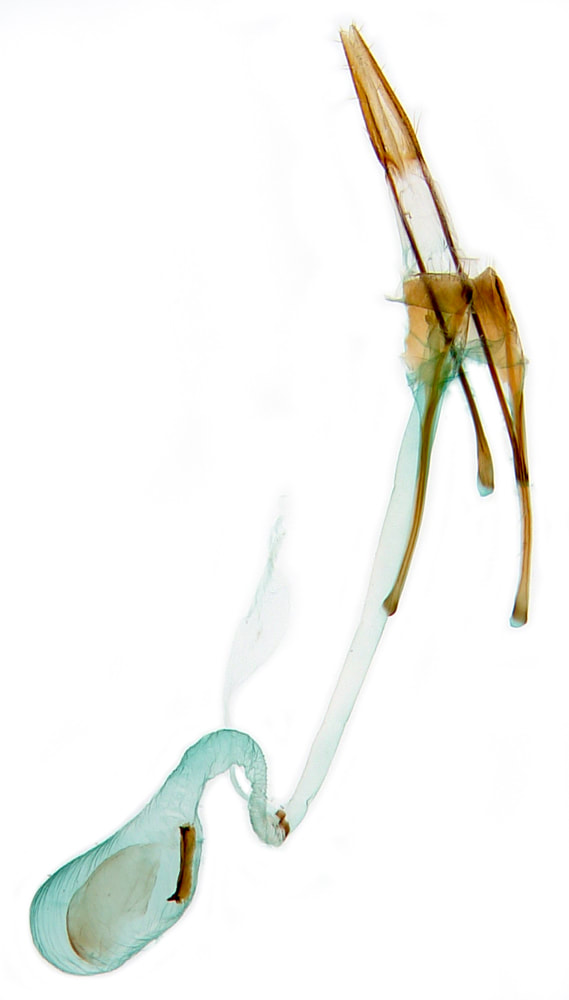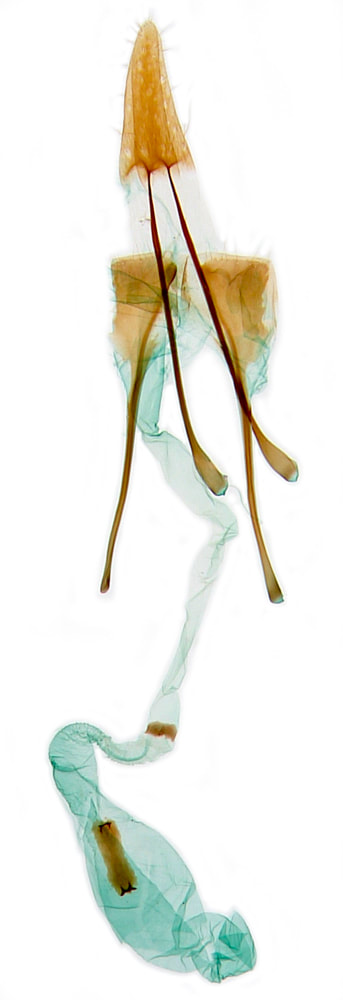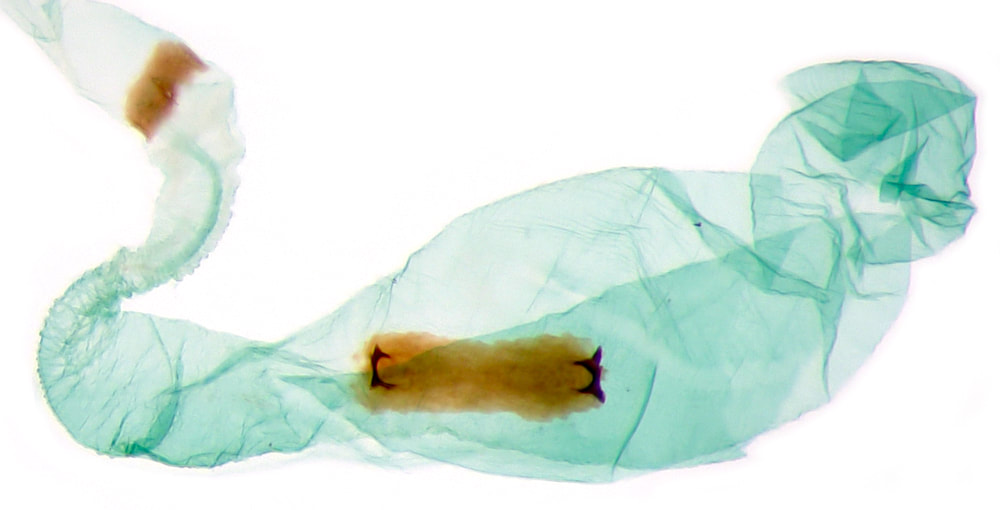35.071 Monochroa lucidella (Spike-rush Borer)
ws: 12-14mm* (MBGBI4.2), fw: 6.9-8.4mm (personal observation); Jun-Jul; common spike-rush (Eleocharis palustris); locally common in fen, marsh, water meadow in England & Wales
*The ws range quoted in MBGBI is clearly incorrect; the fw lengths of specimens I have examined suggests this should be 14.5-17.5mm.
*The ws range quoted in MBGBI is clearly incorrect; the fw lengths of specimens I have examined suggests this should be 14.5-17.5mm.
ID: Cannot be reliably identified without genital dissection; however, once recognised as Monochroa, MBGBI4.2 keys to this species as follows: forewing without blackish longitudinal streaks; only one stigma present (2nd discal); forewing not whitish-ochreous; ws>9mm; dorsal surface of abdomen wholly fuscous; antenna without white rings in apical area.
Male genitalia: Monochroa species vary in the shape of the valva and sacculus and in the arrangement of aedeagal cornuti. In M.lucidella the valva is almost triangular without any significant apical process; the sacculus is a short curved process (similar to several other species); the aedeagus has a cluster of cornuti in the bulb (the only species with quite this arrangement).
Female genitalia: the signum has a distinctive form - an elongate rectangular plate with paired spines at each end, the posterior pair connected narrowly, the anterior pair connected more broadly. The ovipositor is also distinctive with tapering anal papillae and the anterior apophyses dilate at their anterior ends.
Male genitalia: Monochroa species vary in the shape of the valva and sacculus and in the arrangement of aedeagal cornuti. In M.lucidella the valva is almost triangular without any significant apical process; the sacculus is a short curved process (similar to several other species); the aedeagus has a cluster of cornuti in the bulb (the only species with quite this arrangement).
Female genitalia: the signum has a distinctive form - an elongate rectangular plate with paired spines at each end, the posterior pair connected narrowly, the anterior pair connected more broadly. The ovipositor is also distinctive with tapering anal papillae and the anterior apophyses dilate at their anterior ends.
§1 Westcliff-on-sea, Essex; 23/07/2013; female; fw 7.7mm
§2 Conwy Mountain, Caernarvonshire; 21/07/2015; male; fw 6.9mm
§3 Arne, Dorset; 07/07/2016; male; fw 7.3mm; to light
§4 Westcliff-on-sea, Essex; 20/07/2018; female; fw 7.7mm
§5 Sutton Fen, Norfolk; 11/07/2022; female; fw 8.4mm
All images © Chris Lewis
§2 Conwy Mountain, Caernarvonshire; 21/07/2015; male; fw 6.9mm
§3 Arne, Dorset; 07/07/2016; male; fw 7.3mm; to light
§4 Westcliff-on-sea, Essex; 20/07/2018; female; fw 7.7mm
§5 Sutton Fen, Norfolk; 11/07/2022; female; fw 8.4mm
All images © Chris Lewis
Page published 29/08/2013 §1 | §2 added 09/04/2016 | §3 added 29/11/2016 | §4 added 27/04/2019 | §5 added 18/12/2022
